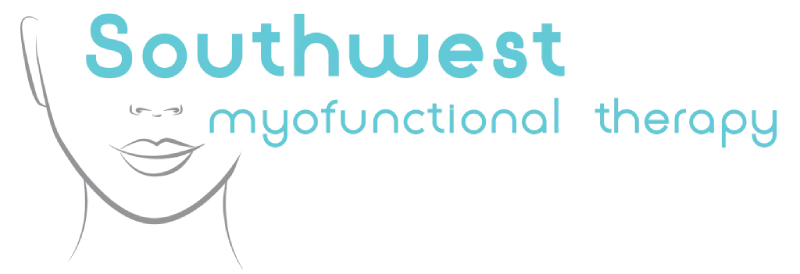Welcome to the Southwest Myofunctional Therapy blog – part 2
Posted by Sandraluz Gonzalez Nov 16, 2022

This post is the second in a three part series on orofacial myofunctional disorders and orofacial myofunctional therapy. If you haven’t read part 1 yet, I recommend you do before continuing.
Types of orofacial myofunctional disorders (continued)
Tongue Tie
Ankyloglossia, more commonly known as tongue tie, is an OMD that decreases the mobility of the tongue tip. Tongue tie is caused when the lingual frenulum – the piece of skin that connects the bottom of the tongue to the bottom of the mouth – is too thick, too short, or attached too far forward on the tongue.
Tongue tie can cause a number of problems. Since both tongue mobility and the tip of tongue are critical to forming words, it can cause speech problems. Decreased tongue mobility due to tongue tie can also lead to improper swallowing, which puts pressure in the wrong areas of the mouth and can lead to malocclusion (a misalignment of the bite) such as an open bite.
Tongue tie can also lead to mandibular prognathism, a condition where the tongue pushes too hard against the front of the jaw, causing it over time to rest too far forward, even to the point where the bottom teeth are forward of the top when the jaw is closed. Sometimes known colloquially as lantern jaw, this condition causes a number of other issues, and often requires surgery to treat – so it’s better to catch it in the stage of tongue tie, when it can be treated more easily.
Lip tie
Lip tie is similar to tongue tie, but affects the superior labial frenulum rather than the lingual frenulum. The superior labial frenulum connects the inside of the upper lip to the anterior surface of the maxillary gingiva – the gums above the front teeth.
Lip tie is best known for the problems it causes in infants. This is because a lip tie can adversely affect a baby’s ability to breastfeed. However, while it is less frequent, a lip tie can cause functional issues in adult patients. These issues include halitosis (chronic bad breath), gum disease, headaches, and more.
Check back soon for Welcome to the Southwest Myofunctional Therapy blog – part 3. In the meantime, check out our page on orofacial myofunctional therapy.
Office Hours
MON - THU8:30 am - 5:00 pm
FRI - SUNBy appointments only





